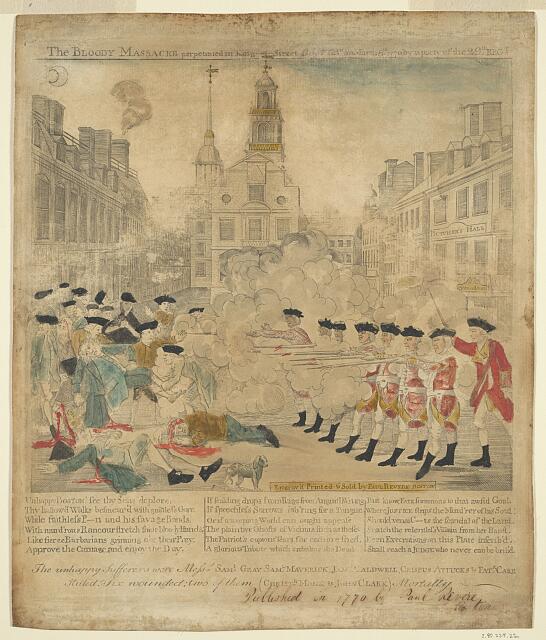The Bloody Massacre Perpetrated in King Street, Boston, March 5, 1770

Annotation
The events on the night of March 5, 1770, in Boston, Massachusetts, became known as the Boston Massacre and are often taught from the perspective of people like Paul Revere. While this event is often taught as part of U.S. history, it can also be part of a world history curriculum. The engraving responsible for the name “Boston Massacre” was created by Revere the same night of the events to shape public perception leading up to the trials of the soldiers that took place at the end of the same year. The engraving puts the colonists in opposition to the British soldiers; however, it was not until the Declaration of Independence in 1776, six years after the Boston Massacre, that the colonists formally announced their intentions to break ties with Great Britain. Instead of viewing this event in the same way as Revere and other Rebels, as two opposing sides coming to a head in deadly and unjust conflict, viewing this event as an internal conflict of Great Britain’s empire would allow consideration of the Revolution’s role in global events. A growing number of historians describe the American War of Independence as a Civil or World War, and the War of Independence was a war of separation from one of the major world powers of the age.
Credits
Library of Congress